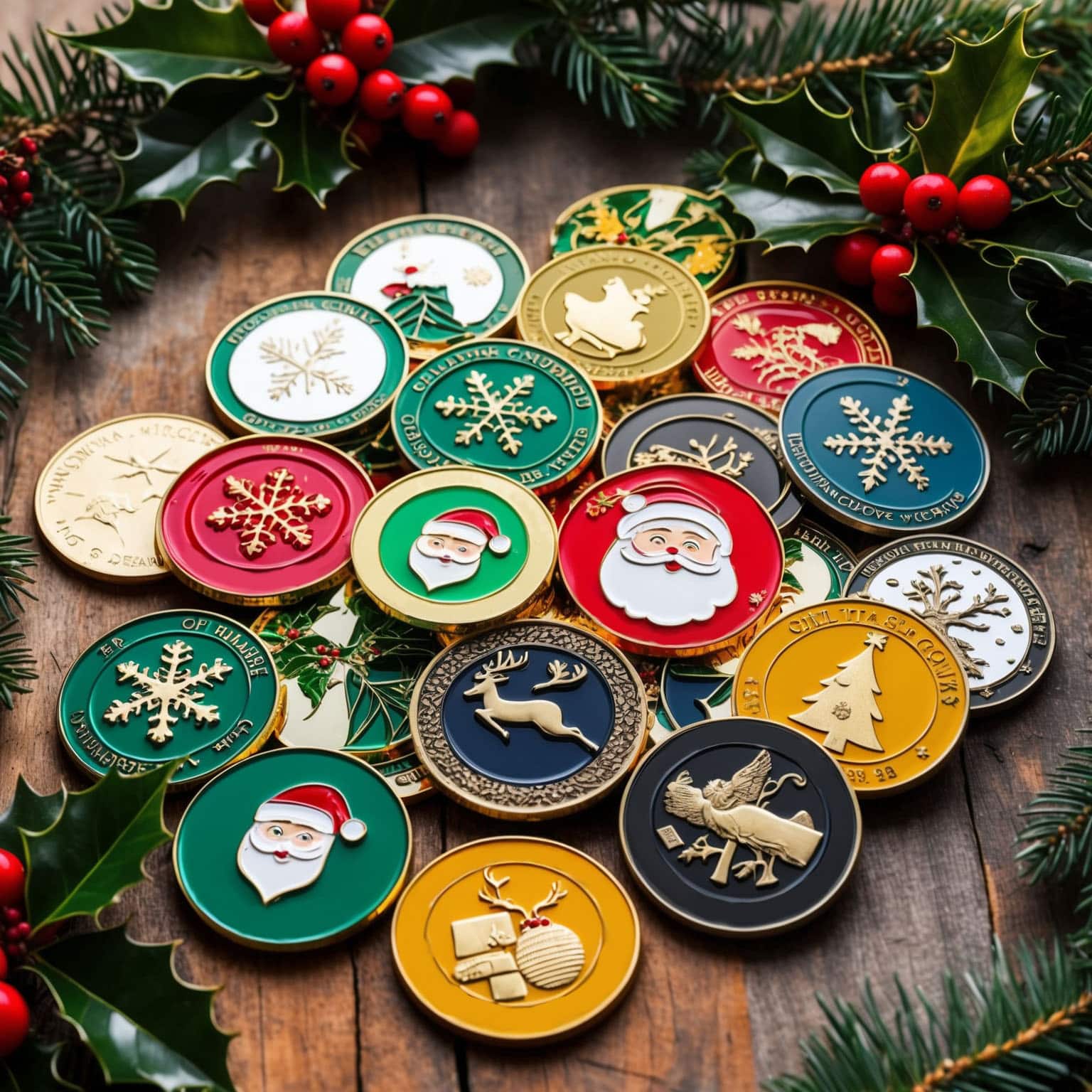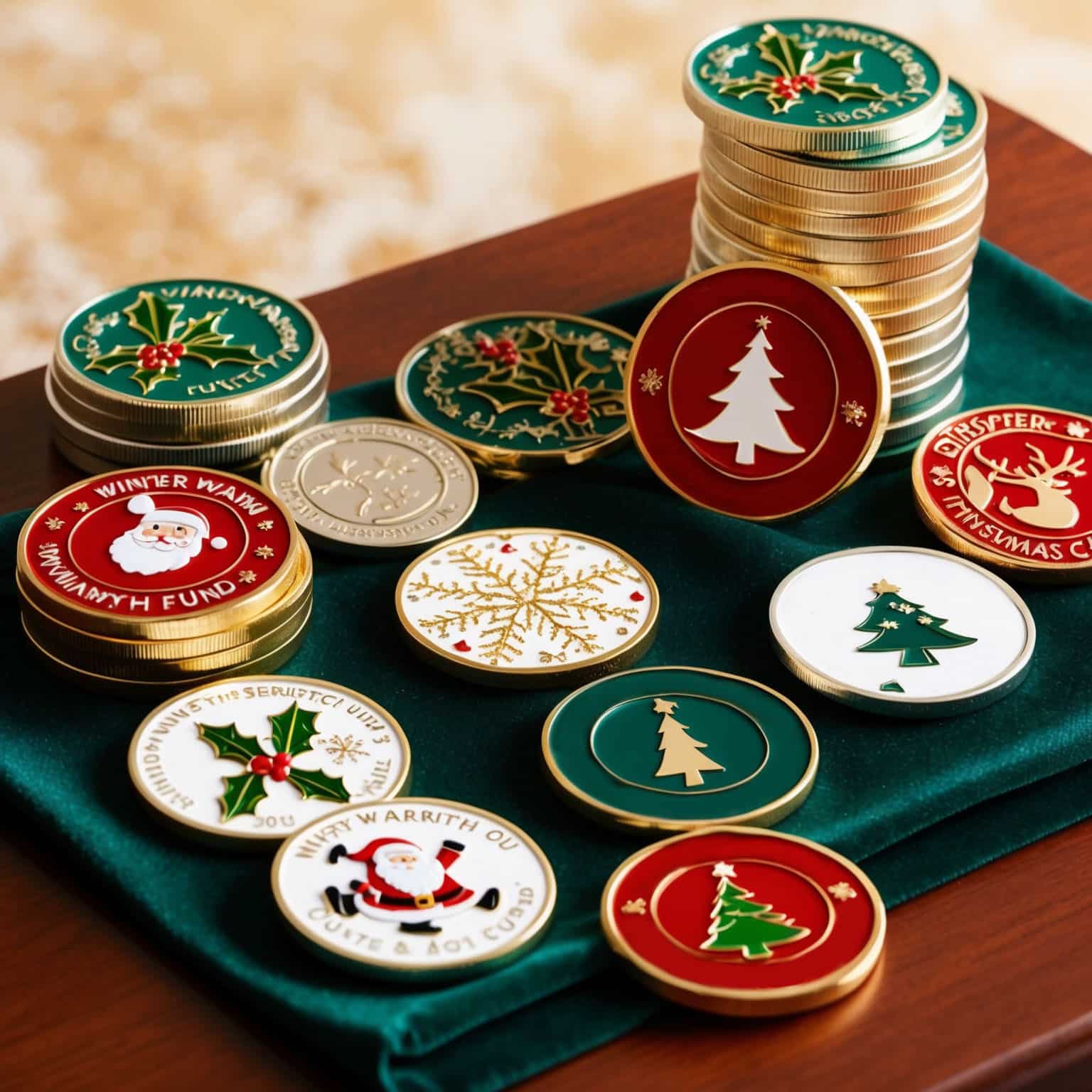The Diplomatic Power of Challenge Coins
Challenge coins, often seen as tokens of honor and camaraderie within military circles, have found their place in diplomatic relations. These small yet significant coins carry deep symbolic meanings and have been embraced by diplomats, heads of state, and international organizations as a means of fostering goodwill, acknowledging contributions, and solidifying partnerships. In the realm of diplomacy, a challenge coin serves as both a gesture of respect and a tool for cultural exchange. This article explores the impact of a challenge coin on diplomatic relations, from their use in protocol to their practical applications in international affairs.
1. The Origins and Evolution of Challenge Coins in Diplomacy
Historical Background and Military Origins
Challenge coins originated in the military as symbols of unit identity, camaraderie, and recognition. They were initially used to boost morale and establish a sense of belonging among soldiers. Over time, their use expanded beyond the military, finding a place in various sectors, including law enforcement, emergency services, and eventually diplomacy.
Example: A U.S. military commander might present a challenge coin to a visiting foreign dignitary as a gesture of goodwill and mutual respect.
Expansion into Diplomatic Circles
The practice of exchanging a challenge coin has become increasingly popular in diplomatic circles. Diplomats and government officials often use these coins to honor visiting dignitaries, acknowledge contributions to international cooperation, and celebrate significant events. The exchange of challenge coins has become a part of diplomatic protocol, symbolizing a commitment to fostering positive relations.
Example: A U.S. ambassador might present a challenge coin to a host country’s foreign minister during a diplomatic visit, symbolizing a commitment to strong bilateral relations.
2. The Symbolic Significance of Challenge Coins in Diplomacy
Representation of National Identity and Values
Challenge coins often feature national symbols, emblems, and mottos, making them powerful representations of a country’s identity and values. When presented by diplomats, these coins serve as a reminder of the presenting nation’s heritage, ideals, and commitment to certain principles, such as democracy, peace, or human rights.
Example: A challenge coin presented by a Canadian diplomat might feature the maple leaf, a symbol of Canada’s identity, along with a motto promoting peace and cooperation.
Cultural Exchange and Understanding
The exchange of a challenge coin also facilitates cultural exchange and understanding. By incorporating elements of both the presenting and receiving countries, these coins can bridge cultural gaps and promote mutual respect. They provide a tangible connection between cultures, enhancing diplomatic dialogue and collaboration.
Example: A challenge coin designed for a U.S.-Japan diplomatic event might feature both nations’ flags and a design element reflecting their shared history and cooperation, such as a cherry blossom and an eagle.
Commemorating Diplomatic Achievements
Challenge coins are often used to commemorate diplomatic achievements and milestones. Whether celebrating the signing of a treaty, the anniversary of diplomatic relations, or successful bilateral talks, these coins serve as lasting reminders of significant moments in international affairs.
Example: A challenge coin issued to commemorate the signing of a free trade agreement might include the date of the agreement, the flags of the participating countries, and a symbol representing trade and economic growth.
3. The Protocol of Exchanging Challenge Coins in Diplomacy
When and How to Present Challenge Coins
The presentation of a challenge coin in diplomatic settings is often guided by protocol. Coins are typically presented during formal meetings, state visits, or special ceremonies. The presentation is usually accompanied by a handshake and a brief explanation of the coin’s significance, making the exchange a meaningful and respectful gesture.
Example: During a state visit, a U.S. president might present a challenge coin to a visiting head of state during a private meeting, emphasizing the importance of the bilateral relationship.
The Role of Challenge Coins in State Visits
State visits are significant events in diplomacy, marked by formal ceremonies, speeches, and exchanges of gifts. Challenge coins often play a role in these visits, serving as a token of goodwill and a gesture of hospitality. They are sometimes presented alongside other gifts or as part of a larger diplomatic package.
Example: A challenge coin might be included in a gift set presented to a foreign leader, along with other culturally significant items such as books, artworks, or local crafts.
Diplomatic Etiquette and Considerations
Diplomatic etiquette plays a crucial role in the exchange of challenge coins. It is important to consider the cultural norms and expectations of the receiving party. The design and symbolism of the coin should be respectful and appropriate, avoiding any elements that could be misinterpreted or offensive.
Example: When designing a challenge coin for a diplomatic mission to a predominantly Muslim country, care should be taken to avoid imagery or inscriptions that could be culturally insensitive.
4. Practical Applications of Challenge Coins in International Relations
Building and Strengthening Relationships
One of the primary practical applications of challenge coins in diplomacy is building and strengthening relationships between nations. The exchange of these coins symbolizes a willingness to engage in constructive dialogue and cooperation. It can also help to establish a personal connection between diplomats and officials, facilitating more open and effective communication.
Example: A challenge coin exchange between defense ministers from two allied countries might symbolize their commitment to joint security efforts and military cooperation.
Recognizing Contributions to International Cooperation
Challenge coins are often used to recognize individuals and organizations that have made significant contributions to international cooperation. This can include diplomats, international organizations, non-governmental organizations (NGOs), and even private sector partners. The presentation of a challenge coin acknowledges their efforts and encourages continued collaboration.
Example: A United Nations diplomat might present a challenge coin to an NGO leader who has played a crucial role in a humanitarian mission, recognizing their contributions to the success of the operation.
Enhancing Public Diplomacy
Challenge coins can also be used as tools for public diplomacy, helping to promote a country’s image and values abroad. By distributing coins at international events, conferences, or cultural exchanges, diplomats can create a positive impression of their country and build goodwill among foreign audiences.
Example: A challenge coin featuring iconic landmarks and cultural symbols of a country might be distributed at an international cultural festival, promoting tourism and cultural understanding.
5. Case Studies: Impactful Use of Challenge Coins in Diplomacy
Case Study 1: U.S.-China Diplomatic Relations
During a high-level diplomatic visit between the United States and China, U.S. officials presented custom-designed challenge coins to their Chinese counterparts. The coins featured the Great Wall of China and the U.S. Capitol building, symbolizing the long history and ongoing dialogue between the two nations. The exchange of these coins was a gesture of respect and a commitment to continued engagement on key issues.
Outcome: The challenge coin exchange helped to create a positive atmosphere for the talks, emphasizing the importance of mutual respect and cooperation.
Case Study 2: NATO Defense Cooperation
NATO has long used challenge coins to recognize the contributions of member states and partner nations to collective defense efforts. During a NATO summit, challenge coins were presented to military officials and diplomats who played key roles in joint exercises and defense initiatives. The coins featured the NATO emblem and the flags of the participating countries.
Outcome: The presentation of challenge coins reinforced the unity and shared commitment of NATO members, fostering a sense of solidarity and partnership.
Case Study 3: International Environmental Summit
At an international environmental summit, representatives from several countries exchanged challenge coins to commemorate their joint efforts to combat climate change. The coins featured imagery of the Earth, a tree, and the summit’s theme, “Protecting Our Planet.” The exchange of coins highlighted the collaborative spirit of the summit and the shared responsibility of all nations to protect the environment.
Outcome: The challenge coin exchange served as a symbolic gesture of the collective commitment to environmental sustainability and cooperation.
6. The Design and Production of Diplomatic Challenge Coins
Design Considerations
Designing challenge coins for diplomatic purposes requires careful consideration of symbolism, aesthetics, and cultural sensitivity. The design should reflect the values and mission of the presenting country or organization, while also respecting the culture and traditions of the receiving party. Elements such as national emblems, flags, and culturally significant symbols can be incorporated to convey a message of goodwill and respect.
Example: A challenge coin designed for a U.S.-India diplomatic event might feature the Statue of Liberty and the Lotus Temple, symbolizing the values of freedom and spiritual heritage.
Production and Quality Control
The production of diplomatic challenge coins involves selecting high-quality materials and ensuring precise craftsmanship. Coins may be made from metals such as brass, copper, or silver, with various finishes and enamel colors. Quality control is essential to ensure that each coin meets the desired standards and accurately represents the intended message.
Example: A challenge coin produced for a European Union diplomatic mission might feature a polished gold finish and detailed engraving, highlighting the importance of the event.
Presentation and Packaging
The presentation and packaging of diplomatic challenge coins are important aspects of their impact. Coins are often presented in protective cases, velvet pouches, or custom-designed boxes. The packaging should reflect the significance of the coin and enhance the recipient’s experience. Additional elements, such as certificates of authenticity or explanatory notes, can provide context and further emphasize the coin’s meaning.
Example: A challenge coin presented to a foreign dignitary might be accompanied by a certificate explaining the coin’s symbolism and the occasion of its presentation.
7. The Future of Challenge Coins in Diplomatic Relations
Innovation and Customization
As technology and design capabilities continue to advance, there is potential for greater innovation and customization in the design of diplomatic challenge coins. Features such as 3D elements, augmented reality (AR) integration, and unique shapes can add to the coins’ appeal and significance. Customization allows for more personalized and meaningful coins that reflect the specific context of each diplomatic exchange.
Example: A challenge coin with an embedded QR code that links to a video message from a head of state could provide a modern and interactive element to the traditional coin exchange.
Expanding Use and Recognition
The use of challenge coins in diplomacy is likely to expand as more countries and international organizations recognize their value as symbols of goodwill and cooperation. As the practice becomes more widespread, challenge coins may become a standard element of diplomatic protocol, used to mark a wide range of events and achievements.
Example: International organizations such as the United Nations or the World Health Organization might increasingly use challenge coins to recognize member states’ contributions to global initiatives.
The Lasting Impact of Challenge Coins in Diplomacy
Challenge coins have become a meaningful and versatile tool in diplomatic relations, serving as symbols of respect, cooperation, and shared values. From commemorating significant events to recognizing contributions to international cooperation, these coins play a vital role in the practice of diplomacy. The thoughtful design, presentation, and exchange of challenge coins can enhance diplomatic dialogue, build relationships, and foster goodwill among nations.
As the use of challenge coins in diplomacy continues to evolve, they will remain a powerful means of expressing respect and appreciation in international affairs. Whether used in formal state visits, bilateral meetings, or international summits, challenge coins symbolize the ongoing efforts of countries and organizations to work together in pursuit of common goals. By embracing the tradition of challenge coins, diplomats and government officials can continue to strengthen the bonds of friendship and cooperation across the globe.
If you are interested in a unique challenge coin, you can call us at 800-371-6256 or fill out a FREE quote form.








